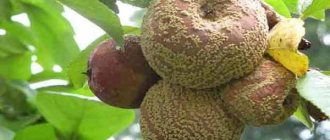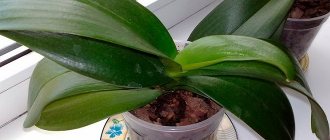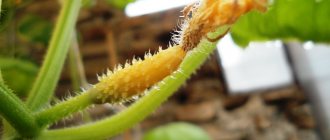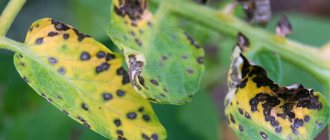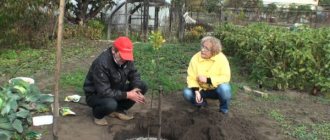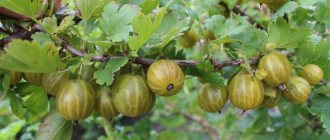Fruit rot or moniliosis of pome fruit is one of the common and dangerous diseases. The fungi that cause it are completely resistant to severe frosts and most treatments and preventive measures. Therefore, the pathogen quietly overwinters on mummified fruits. In this article we will tell you why and how pear fruit rot occurs, how to fight it in the garden and how to treat trees.
In terms of its harmfulness, fruit rot surpasses even parshup. This disease affects fruits both on trees and during storage so that they are unfit for consumption. The fungus that causes moniliosis is just as dangerous for shoots - in this case, the fruit wood and overgrowing branches, and in some cases the entire tree, dry out en masse.
Signs and causes of fruit rot
- Rot on fruits first appears with the appearance of a small brown spot that quickly spreads and covers the entire fruit. Its flesh turns brown, becomes soft and ceases to be edible.
- After 7-10 days, yellow-beige rather large (2-3 mm) sporulation pads of the fungus appear on the affected surface, which are located in concentric circles.
- Condia appear on them, which are spread by wind, rain, insects and infect other fruits.
Rot on pear and other fruit plants indicates a serious disease and can be dangerous for the entire garden.
The infection enters the fruit through wounds, wormholes on the skin caused by wasps, birds, hail, and diseases. Through healthy skin, infection occurs only if a healthy fetus comes into contact with a diseased one. The source of infection is affected fruits, affected fruits left hanging on the tree from the previous season and branches that have dried out from fruit rot and were not removed during autumn sanitary pruning (see → How to prune a pear).
The active development of fruit rot is facilitated by warm (+24-28) and humid (at least 75%) weather, dense plantings and the development of scab, since its signs on fruit trees are an excellent gateway for infection. The fungus does not tolerate direct sunlight, so trees with thick crowns can suffer from it much more often than those trees that are pruned on time.
The main reasons why fruits rot on a tree
Pear fruits crack, turn black and rot right on the tree branches for many reasons. Before starting treatment, it is necessary to identify the source of the lesion and eliminate it.
Diseases
Insects transfer many diseases from diseased branches to healthy ones; this is a common reason why fruits begin to turn black and rot:
- scab: at first they don’t pay attention to it, small black dots appear on the fruit, which do not affect the taste, a cracked pear begins to rot from the inside;
- Moniliosis: manifests itself as small brown spots that gradually grow and lead to rotting of the fruit with gray spots of mold on the entire surface.
Age
If you have an old garden, the crop may become rotten and begin to turn black due to the fact that the trees have exhausted their resources. They become unsuitable for growing fruits, because of this, the ripe pulp inside has rot.
How to deal with fruit rot on pears
First of all, it is very important to follow the main rules of agricultural technology and care for pears and other fruit trees. Only ripening fruits are infected with moniliosis - the fungus does not penetrate the wood or bark of the tree. Therefore, if rotten fruits are found on a tree, it is necessary to urgently remove and destroy them, otherwise the fungal spores will spread further throughout the garden. It is equally important to collect rotten fruits that have fallen from the branches, as they are a source of damage.
You should not put pears affected by fruit rot in compost pits, because the spores easily overwinter there and again cause rotting of the fruit next year. It is best to bury them in a deep hole, at least half a meter, outside the garden. In addition, branches and leaves that have fallen from the tree must be collected and burned in a fire.
Tip #1. It is necessary to regularly take preventive measures to combat insect pests - moths, caterpillars, weevils.
Preventive spraying of trees a month before harvest with iodine solution (10 ml per 10 liters of water; repeat after 3 days) or Fitosporin solution is effective against the disease. When you see the first signs of moniliosis, spray the pears with Zircon. These sprayings are especially effective in the spring (twice with a break of 2 weeks), if in the previous season the disease was rampant in the area. When harvesting, be careful not to cause mechanical damage to the pear fruits.
The picture shows a close-up of fruit rot that has formed on a pear fruit.
Chemical methods for combating fruit rot of pears are the same as for combating pear scab:
- Affected trees and soil should be generously sprayed with iron sulfate, copper sulfate, nitrafen, and oleocuprite. Spraying is carried out in early spring, before the buds open.
- Use Bordeaux mixture (400 g per 10 liters of water) as a spray at the beginning of bud break. when spraying in the bud extension phase, use a 1% solution of Bordeaux mixture (100 g per 10 l of water).
- The second spraying is carried out immediately after flowering with 1% Bordeaux mixture or zineb solution, chloroxides of phthalan, copper, captan, cuprosan, and other fungicides.
- The third spraying is carried out simultaneously with spraying against the codling moth - 15-20 days after flowering. If preparations of Bordeaux mixture and copper oxychloride are used, you must first make sure that they do not cause burns to the leaves.
- Only fruits without mechanical damage are stored for storage.
What to do if pears crack and rot
To protect the fruits, you need to use effective drugs and properly care for the trees. Some gardeners, if pears dry out and turn black, resort to traditional methods.
In the early stages of the disease, common fungicides help well. If moniliosis actively progresses, the fruits rot, you will have to remove all the affected fruits from the tree.
The processing scheme looks like this:
- Preparations with a high copper content are sprayed at the stage of bud formation.
- As the flower stalks extend, and also after flowering, use “Skor” or “Chorus”.
- During fruit filling, it is necessary to treat the pears twice more with fungicides. Wait 14 days between procedures.
- When all the leaves fall in the fall, the tree is again sprayed with copper-containing preparations.
If the infection spreads quickly, the number of treatments is increased. They are carried out every two weeks. Final processing is done at least 15 days before the harvest is due.
Traditional methods
Most often they are resorted to to save young trees. A variety of solutions are prepared for spraying. The simplest of them is to dilute laundry soap in water and add wood ash. Aqueous solutions of colloidal sulfur, citric acid and ferrous sulfate are also used.
If the pear fruits crack and turn black, traditional methods may be useless. After treatment, you need to carefully monitor the trees. If there is no improvement, you should immediately start spraying with chemicals. Fungal infections spread rapidly, and you can easily lose all the fruits; they will rot quite quickly.
We invite you to familiarize yourself with milk mushrooms: benefits and harms for the human body
Attention! Many gardeners actively use biological products (“Alirin”, “Fitolavin”, etc.). They are more gentle on trees and work well against diseases in the early stages. To enhance the positive effect, you can add “Epin” or “Zircon”.
One of the reasons why pears turn black and fall off is often incorrect agricultural practices. Particular attention is paid to trees in autumn. During this period, sanitary pruning of dry branches is mandatory. They also get rid of infected leaves and fruits.
All carrion is raked into a distant corner of the garden and buried in the ground to a depth of 1.5 m. If possible, it is better to dispose of rotten fruits outside the site. Do not use them to make compost. Otherwise, spores in the future will infect not only pears, but also other garden plants.
What to plant next
With the help of special plants you can repel dangerous pests. It is best to use flowers and herbs with a rich aroma for this. It is recommended to plant mint, thyme, elderberry, and wormwood marigold near the pears. Codling moths and other insects cannot tolerate the smell of these plants. But pollinating insects find their aroma attractive, which will allow them to get a good ovary. In some cases, infusions and decoctions are prepared from flowers and leaves for spraying.
Diseased specimens are a source of infection, so they should not be stored with healthy fruit. Crops affected by the disease are often left hanging on the branches, which provokes the spread of rot the following year. The pathogens penetrate the buds, seep into the tissues and begin to actively destroy the trees.
In autumn, during sanitary pruning, dried fruits with old shoots and foliage must be removed. Diseased parts cannot be used for mulching and composting. Rotting remains are collected in a heap and burned away from the site. Wounds on the bark must be treated with garden varnish.
If the trees are old, the best way to reduce yield loss is to start a young orchard, as fruiting plants have a shelf life. Most methods are time-tested.
Fungicides containing copper help against moniliosis; they are sprayed at the stage of bud formation. As the fruits ripen, you need to process the pear 2 more times every 14 days. Repeat the procedure in the fall after harvesting, when the leaves fall off.
A popular way to treat young trees is to make a solution of laundry soap, add a little water and spray them after buds appear. But if the fruit has already turned black or cracks appear, this method will not help.
Pests do not like the aromas of herbs, so you can plant a bed next to them:
- rosemary;
- cilantro;
- mint;
- thyme;
- sagebrush;
- marigold.
Avoid planting honey plants nearby so as not to attract wasps that spoil the harvest. It is better to plant pears separately from apple trees, grapes, apricots and others with spreading crowns, so that when they grow they have enough sunlight to ripen the fruits.
Prevention of fruit rot on pear
The picture shows a close-up of the area where a pear fruit is affected by fruit rot or moliniasis.
Treatment of a tree affected by moniliosis is very labor-intensive, costly and ineffective. Therefore, one cannot do without prevention, which consists of:
- careful selection of planting material, purchasing it only from well-established nurseries;
- choosing the right place for planting and following recommendations for its density.
Prevention measures
Pears require care from the beginning of planting. In order for the harvest to be plentiful and the number of affected fruits to be minimal, it is necessary to carry out a set of preventive measures:
- the crown must be thinned out so that after rain it dries faster and does not create a greenhouse effect - a favorable environment for the growth of bacteria;
- all fruits need to be collected, as they become overripe and become tasty prey for birds and insects that carry infections;
- Treating the garden in a timely manner with special products containing copper is the best protection against most diseases.
If you find a rotten pear, you must immediately treat the branches and find the cause of the disease in order to save the rest of the crop.
On a note!
Treatment is carried out in spring, summer and autumn with various preparations in order to reliably protect the garden from diseases.
A pear orchard requires attention; it bears fruit well only with constant careful care. A regular set of treatments against diseases and pests, as well as compliance with the rules of planting and proximity to other plants, guarantees a bountiful harvest in the fall. This is all you need to do if the pears on the tree are rotting.
Chemical treatment of pears for fruit rot
Spraying the pear is carried out several times. Preparations are used that contain copper, Bordeaux mixture, as well as its substitute - copper oxychloride, fungicides Horus, Azofos, etc.
Preparations for processing pears:
| Drug name | Characteristic |
| Bordeaux mixture | The most popular drug against many fungal diseases, including fruit rot. To prepare the liquid, use a mixture of copper sulfate and lime mortar. Pear trees are sprayed before buds open. |
| Copper oxychloride | Contact fungicide. Also used in the fight against fungal diseases. Medium toxic product. Convenient to use. |
| Azophos | Ecological, safe to use product. Quite highly effective in the fight against fruit rot on pears. Sold as a suspension. The composition contains useful microelements. The composition is prepared immediately before use, according to the instructions. |
| Horus | Available in the form of water-dispersed granules. It penetrates into the leaf cells some time after application. Effective when operating at low temperatures. Trees should be treated shortly before harvesting the fruits. Horus neutralizes them and inhibits the growth of mycelium. |
Pests are the third reason why pears crack and rot.
Insects penetrate inside the fruit, laying larvae there. Over time, the pear fruits crack and rot on the tree. If preventive treatment against parasites is not carried out, the risk of losing the crop increases. The two pests that cause the most damage are codling moths and weevils.
codling moths
They feed on pear seeds. The insect gnaws through the peel and goes deep into the pulp, infecting it with caterpillars. As the disease progresses, the fruits change color and rot. To combat codling moths, “Aktellik”, “Aktaru”, and also “Sonnet” are used.
Weevils
These are small parasites that live on branches. They are capable of infecting all parts of the tree, including the fruits, causing the latter to rot. You can get rid of them with the help of such drugs as Fufanon, Iskra-M, Decis.
Attention! First you need to carry out a test spraying. The drug is applied to one affected tree and left for a day. If the condition does not worsen, the remedy is safe. If a strange coating appears on the leaves and branches, you should stop using this chemical. Also, do not increase the dosage.
Folk remedies for fighting fruit rot
It is best to begin the fight against rot on pears (with lightning) at the first noticeable lesions, then the chances of the plant recovering are much higher.
First of all, you can use improvised means to prepare preparations that need to be sprayed on pears:
- Mix 40 g of citric acid, 25 g of iron sulfate in 10 liters of water. Spray trees with this solution. It is stored for 14 days.
- Mix 60 kg of humus, 1.5 kg of iron sulfate in 10 buckets of water. Use a hoe to make holes under the trees and pour the prepared solution into them.
In order to effectively combat fruit rot, it is necessary to get rid of the carriers of this disease - insect pests. The following folk remedies are well suited for this:
- colloidal sulfur solution;
- laundry soap solution;
- decoctions of yarrow, chamomile, tobacco dust, dandelion, garlic.
As the disease progresses, it is good to inject iron into the branches and trunk of the tree. For this purpose, iron sulfate (150 cm3) is used. Holes must be drilled in the wood into which a funnel is inserted and the preparation is poured. You can also use dry injection in the form of tablets: they are placed in holes drilled in wood and sealed with a mixture of cement and sand.
Mistakes gardeners make in the fight against moniliosis
You can often see mummified fruits on the tops of fruit trees. This means that next spring they will become a direct source of pathogens. All affected pears must be picked and disposed of. Other gardeners ignore preventive measures and allow trees to become severely infested. In this case, only chemical drugs can help - the method of fight is radical and unsafe.
It is believed that fruit rot is destroyed by fertilizers. This is not entirely true. Mineral fertilizers have no effect on disease pathogens. To prevent and combat fruit rot, phosphorus-potassium fertilizers are used, which strengthen tree tissues and make them impenetrable to pathogenic fungi.
